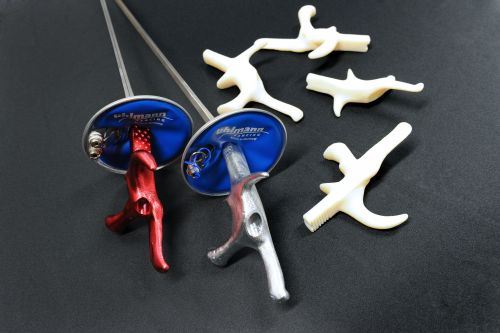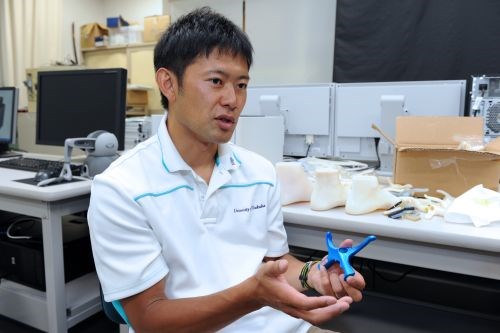Building Olympians, Layer by Layer
Personalized swords manufactured through 3D printing helped the Japanese fencing team take home the Silver in the 2012 Olympics.
Share
Read Next
When competing in the Olympics, men and women spend years practicing and refining their respective athletic abilities. Yet, all the training in the world cannot overcome certain discrepancies in equipment, such as the hand-filed grip traditionally used in fencing. When the University of Tsukuba, Japan began using a 3D printer for sports science R&D, it produced equipment that Japan’s fencing team used to win the Silver medal in the 2012 London Olympics.
Before 3D printing, there was only one type of fencing hilt in the world, and each competitor had to personally file the hilt to customize the fit and achieve a non-slip surface. If the sword broke, it was almost impossible to get another one with the same fit. Even the slightest difference in the shape of the hilt can affect an athlete’s performance. So when a research team led by Professor Norihisa Fujii at the University of Tsukubs’s Faculty of Gymnastics learned that the hilt of a fencing sword must fit the fencer’s hand perfectly, they began looking for ways to improve the sword.
The researchers scanned the actual equipment used by the fencers in 3D, and the resulting polygon data was then incorporated into 3D CAD. The 16-micron accuracy of the PolyJet-based Objet350 Connex 3D printer from Stratasys (Eden Prairie, Minnesota) enabled the researchers to produce iterative prototypes of each sword with minute variations according to the athlete’s feedback. A total of 70 prototypes were produced.
Osamu Takeda, a researcher who managed the prototype modeling, says that since players are not engineers, they talk about their requirements instinctively. With this in mind, the team developed various patters based on different assumptions. “With the Objet Connex multi-material 3D printer, we can do this easily. We can respond flexibly and promptly because the machine is so accurate,” he says.
The customized, completed hilts were manufactured in April 2012, three months before the London Olympics. Each athlete went to the game with five spare hilts, which provided a sense of security, the research team says.
Stratasys attributes the accuracy of 3D printing technology, along with the durability and flexibility of the materials, to the technology's increased use in sports equipment concepts. The fast turnaround time of 3D printing also enables the athlete to try several design iterations until the equipment exactly matches their personal preferences.
The University of Tsukuba is now exploring other 3D printing sports applications such as protective equipment for gymnasts, shoes for javelin throwers, triathlon wear, sailing masts, a footwork assessment system for badminton and more.
Related Content
-
3D Printed Lattices Replace Foam for Customized Helmet Padding: The Cool Parts Show #62
“Digital materials” resulting from engineered flexible polymer structures made through additive manufacturing are tunable to the application and can be tailored to the head of the wearer.
-
3D Systems’ VSP Bolus Optimizes Radiotherapy Targeting
The system is designed to enable the creation of a more personalized bolus made from a soft material that contours to the patient’s anatomy, enabling a more efficacious treatment and a more comfortable experience.
-
Admatec’s Larger Integrated Binding/Sintering Furnace for Ceramic 3D Printing
Company scales up for more efficient mass customization and serial ceramics 3D printing production lines.
















